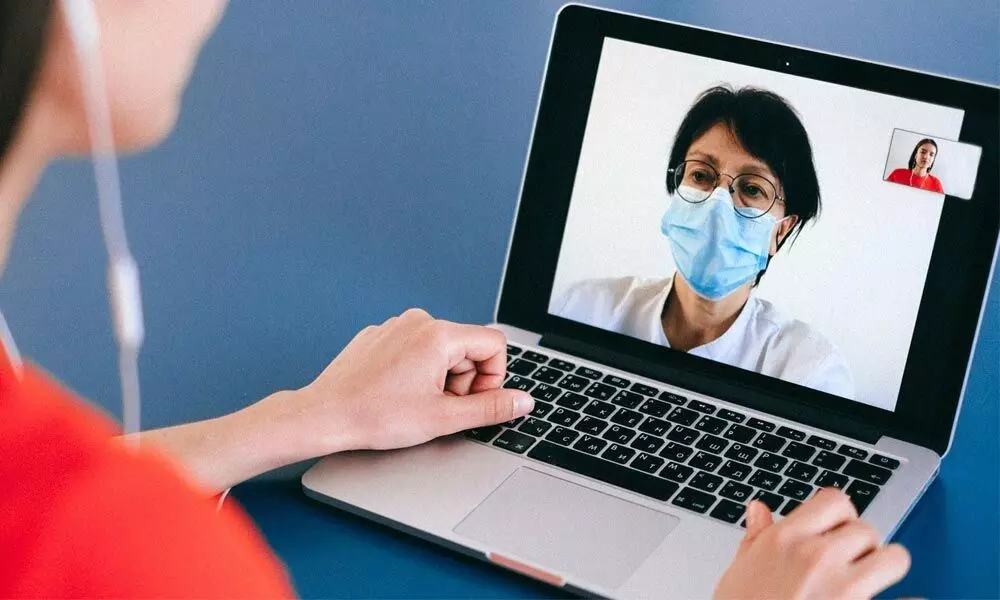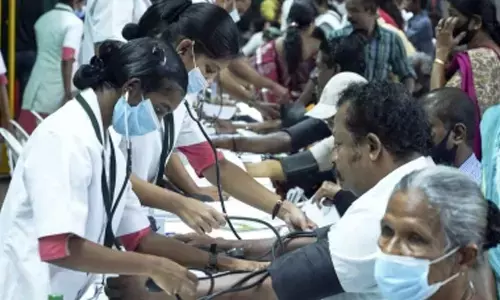Govt should focus on telehealth to achieve holistic wellness

Govt should focus on telehealth to achieve holistic wellness
Telehealth has emerged as a viable tool for healthcare providers and governments to improve accessibility, provide remote care, and help them in achieving universal healthcare
Telehealth has emerged as a viable tool for healthcare providers and governments to improve accessibility, provide remote care, and help them in achieving universal healthcare. The medical world is constantly changing. Technology now plays a predominant role in the medical domain. As doctors regularly look for better ways to treat people, technology has brought numerous great advances to the medical field. Technological advancements such as telemedicine, obtain access to medical services or information that might normally be unavailable.
The growth of smartphone ownership and spread of broadband connectivity have been the two most prominent developments that have, in recent years, created a large potential market for teleconsultations. Telemedicine is the exchange of medical information from one site to another through electronic communications. This is done for the purpose of improving a person's health.
Telemedicine has been around for over 40 years. It is a rapidly growing field. It can be very difficult to get an appointment with primary care doctors and specialists. The waiting list can be long and even getting a referral doesn't guarantee a quick appointment. Telemedicine can help bring you and the doctor together more efficiently.
India's rural urban divide in terms of accessibility to healthcare facilities is widely known. Rural areas that are home to over 70 per cent of the population have access to less than 24 per cent of the doctors. According to National Health Mission say that the doctor patient ratio in rural areas is seven times lower than in urban areas. There is a whopping 82 per cent shortage of specialists in community health centres.
Healthcare providers and social entrepreneurs in India have already gauged the potential of telehealth services to grow in underserved areas. The government should initiate a series of telehealth based projects to make doctors and consultations easily accessible to people living in rural areas and urban slums. Medical emergencies like heart failure, critical accidents, and snake bites are being handled effectively in western countries along with monitoring chronic conditions via connected devices. Increasing penetration of telehealth services not only enable people in rural areas to depend less on unqualified medical practitioners, but it also saves a lot of people from spending time and money on travelling long distances to seek medical help. Telehealth centres, when made accessible to a large number of underserved people, can help significantly reduce the long queues in government hospitals.
Telemedicine has the potential to replace half of the in-person outpatient consultations in India and an accelerated implementation could enable us to tap 60 to 80 per cent of this potential by 2025. It should not be considered as a complete replacement for care by doctors, instead, it must be developed to act as a bridge. Mass disease screening programmes in western countries have helped successfully reduce mortality rates due to non-communicable diseases. Reaching out to the underserved consumers in many ways should be the primary focus of telehealth services.
Enabling easier access to multiple doctors' opinion and providing holistic wellness advice are another vital components that have gained eminence. There are several advantages to telemedicine. One of the biggest is it gives you access to specialists and information that you might not readily have access to otherwise. During a telemedicine consultation, you usually have a chance to tell the doctor about your medical history and ask questions. In turn, the specialist can ask you questions directly. This telemedicine setup is better than trying to relay information to your doctor or nurse, and then having them relay the message. The specialist can hear the sound of your cough or see your swollen eyes. You can hear firsthand about your diagnosis and treatment options. Telemedicine is considered a regular healthcare service. Like any technology, virtual care has its advantages and disadvantages.
While many in the industry point to virtual care as a strategy for reducing healthcare costs, raising care accessibility, and even helping to improve patient outcomes, some remain doubtful of the extent to which virtual care delivers on these promises. Other providers may wonder whether adding virtual care to their practices is worth the time and effort. One of the main disadvantages is availability and cost. You may not have access to telemedicine services. For the provider, it can be expensive to set up and maintain.
Though a great and worthy service, telemedicine may be too costly for smaller healthcare facilities. Telemedicine can open up many treatment doors, but it is not the same as a brick-and-mortar doctor office. If you prefer a more personal or face-to-face relationship, telemedicine might not be the option for you. You often do not get a chance to bond with your telemedicine doctor, and you may never get a chance to personally meet them.
Though no service is perfect, telemedicine is a positive and growing medical treatment option. Telemedicine saves time, money, and lives. With the rapidly rising cost of healthcare and nonexistent in some places, the need for telemedicine continues to grow. It may not be the option for everyone, but the pros seem to outweigh the cons, being able to treat patients from their home, give valuable medical support and information, and provide service to less developed areas makes it hard to pass up.
(The authors are State President, Praja Science Vedika and Gen Secretary, Residential Welfare Association respectively)
















